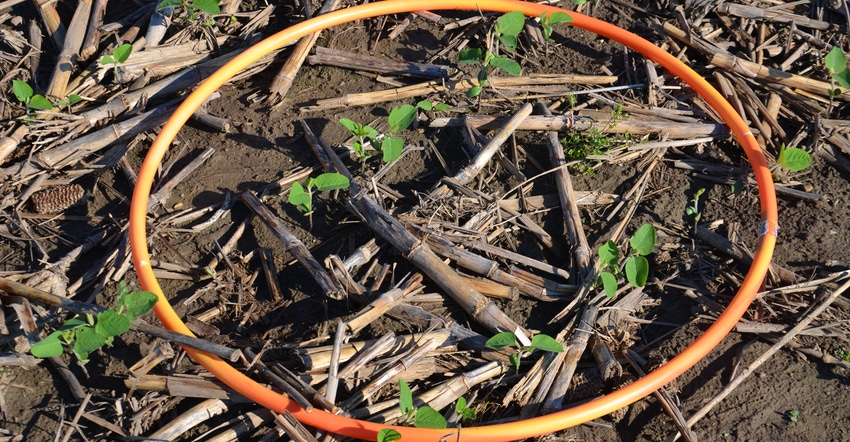
Not every soybean seed will grow. Did enough emerge to still deliver top yields? Steve Gauck, regional agronomy manager for Beck’s, Greensburg, Ind., says that’s one of the first things to determine after soybeans emerge. If the stand is variable, determine stands in each major portion of the field.
How to assess stands is the inaugural topic for Soybean Watch ’20, proudly sponsored by Beck’s. This series will follow a soybean field in central Indiana from planting to harvest. Watch for weekly updates on this website and a monthly column in the magazine.
Stand count matters
Why take time to count plants and determine stands? First, it lets you know how well the planter and/or drill performed. Second, you’ll know upfront whether you have enough plants to obtain maximum economic yields, or if you should consider replanting. Since every day of delay can reduce yield potential if you decide replanting is necessary, make the decision as soon as is practical, Gauck says.
Gauck refers to the Purdue University Corn & Soybean Field Guide when referencing information about soybean stands. Shaun Casteel, a Purdue Extension soybean specialist who provides information for the guide, notes that yield and profits are maximized with 100,000 to 120,000 plants at harvest, regardless of row width. He doesn’t recommend changing target population based on row width. Change it instead based on seed quality, planting equipment and field conditions.
According to the guide, if you have 80,000 plants per acre in 30-inch rows, you can still achieve 100% of maximum yield potential. In 7-inch rows, you could achieve 96% of maximum yield; and in 15-inch rows, around 98%. “We typically suggest that if you have 80,000 plants in 15-inch rows without major skips or weed issues, your best choice is leaving the stand,” Gauck says.
Hula-Hoop method
Measure stands quickly by rolling a Hula-Hoop into at least five random spots in an area, and then averaging the population. Multiply the number of plants inside the hoop when it lands by a factor based on the diameter of the hoop. The factors for 18-, 21-, 24-, 27-, 30-, 33- and 36-inch hoops, respectively, are 24,662; 18,199; 13,872; 10,961; 8,878; 7,337; and 6,165.
Suppose you have a Hula-Hoop measuring 30 inches across. The factor is 8,878. You roll five times and find 12, 9, 11, 10 and 11 plants, for an average of 10.6 plants. Multiply (10.6 times 8,878) = 94,100 plants per acre. “That should be an adequate stand in any row width,” Gauck says.
Linear row method
Count the number of plants in 2/10,000ths of an acre. A 10,000th of an acre is 21 inches of a single row in 30-inch rows, 21 inches of two rows in 15-inch rows, and 21 inches of four rows in 7.5-inch rows.
For example, count the number of plants in 42 inches in two 15-inch rows. Suppose it’s 21. Divide by 2 to get an average per 10,000th of an acre. So, (21 divided by 2) = 10.5 plants times 10,000 = 105,000 plants per acre. Again, in this example you should have plenty of plants to reach top yield.
About the Author(s)
You May Also Like




